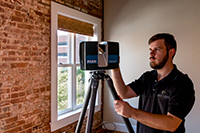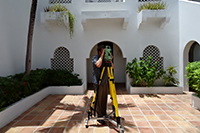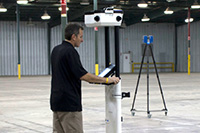We perform as-built surveys of buildings and sites using laser meters and scanners. Guidance for these types of surveys are provided by AIA standards.
We do not perform ALTA Surveys/Boundary Surveys which are used to determine property boundaries and are regulated by and prepared in accordance with the standards specified by the American Land Title Association (ALTA) and the American Congress of Surveying and Mapping (ACSM).
Coast 2 Coast is NOT a licensed land surveying, engineering or architectural company. The site plans we create are NOT land surveys. All site plans created by Coast 2 Coast are exclusively for landscaping purposes. Coast 2 Coast does not determine property lines, and as such our site plans do not constitute a land survey.



